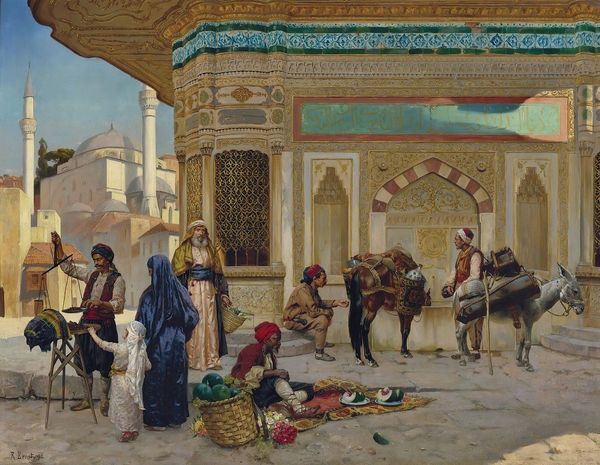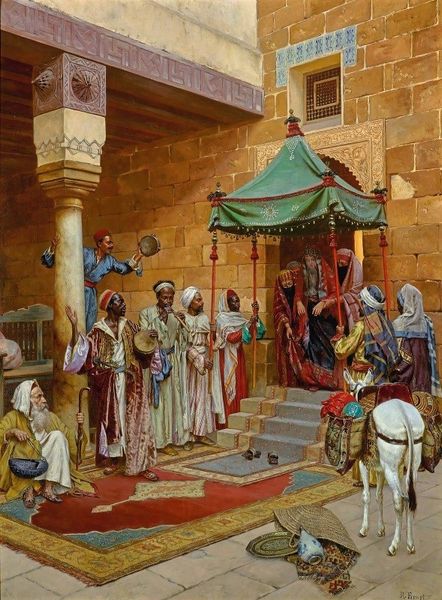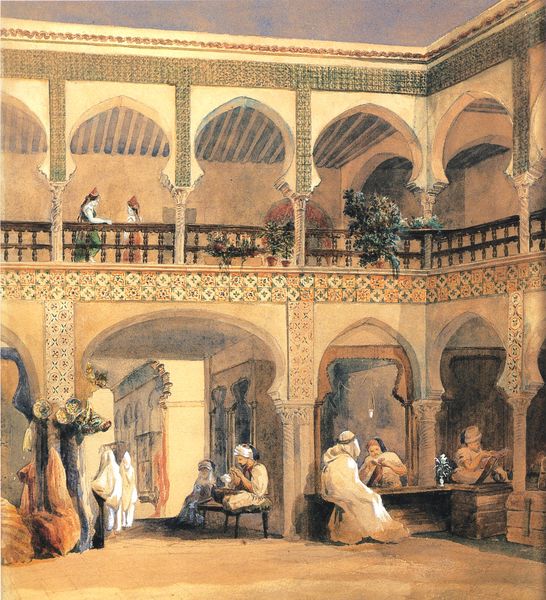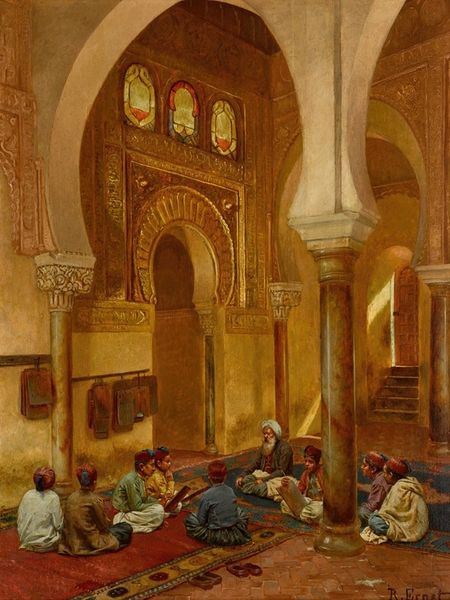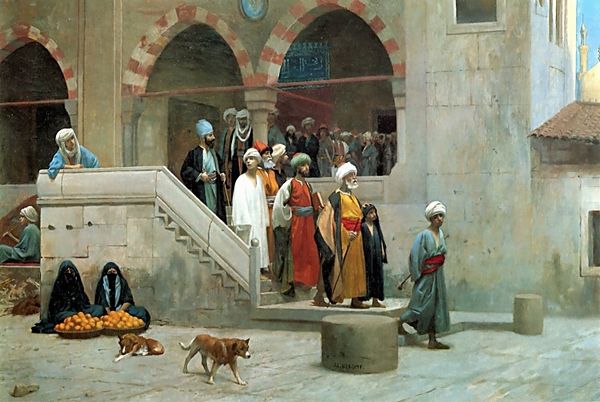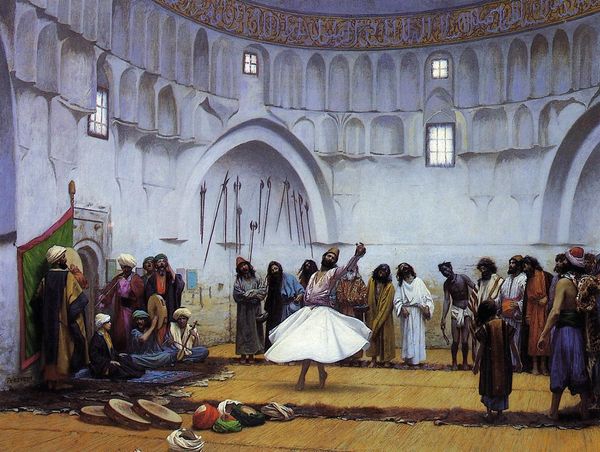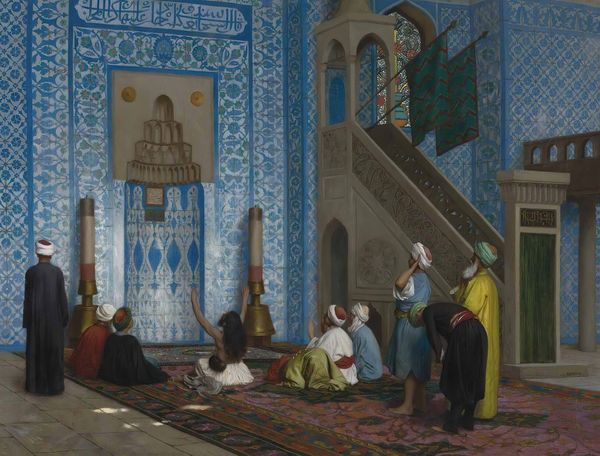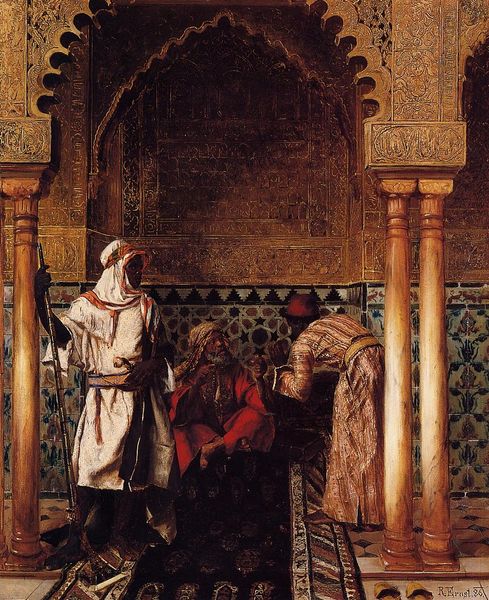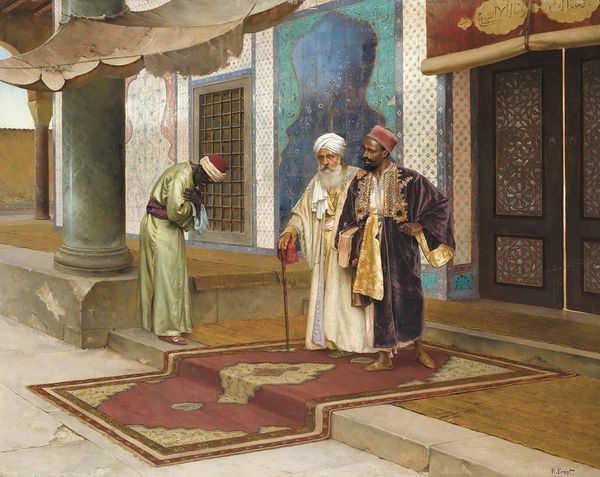
painting, watercolor
#
painting
#
watercolor
#
orientalism
#
cityscape
#
islamic-art
#
watercolour illustration
#
genre-painting
#
academic-art
Copyright: Public domain
Editor: Here we have Ivan Bilibin's watercolor, "Courtyard of Al-Azhar Mosque and University Complex in Cairo," painted around 1900. It's really quite striking – almost like a carefully staged photograph with its incredibly detailed depiction of everyday life. What draws your eye in this piece? Curator: The light, without a doubt! Notice how Bilibin uses the watercolor to create these shimmering, almost dreamlike effects, especially in the way the light filters through the colonnades. The overall effect lends a sense of timelessness, don’t you think? It makes you wonder what stories these ancient stones could tell. I feel like I've walked into an ancient tale, perhaps from 'One Thousand and One Nights'. Does that resonate with you? Editor: Absolutely, the golden hue gives it that kind of atmosphere. I also notice the orientalist style, and I wonder if it captures the authenticity of that place and time or does it project a more romanticized Western view? Curator: That’s a superb question! There’s undeniably a gaze at work here – a lens through which Bilibin, a European artist, is interpreting the East. Consider how he emphasizes architectural grandeur, yet also focuses on the almost "exotic" details of daily life, like the various robes, turbans, and focused poses. The painting invites you to wonder: are we really seeing Al-Azhar, or are we seeing Bilibin’s Al-Azhar? Editor: That’s fascinating – it definitely provides food for thought about the layers of interpretation in art. Curator: Indeed. It reminds us that every artwork is a conversation – not just with the subject it depicts, but also with the artist's own perspective and the historical context in which it was created. Art is a wonderfully endless pursuit! Editor: I’ll definitely remember that, thank you!
Comments
No comments
Be the first to comment and join the conversation on the ultimate creative platform.
